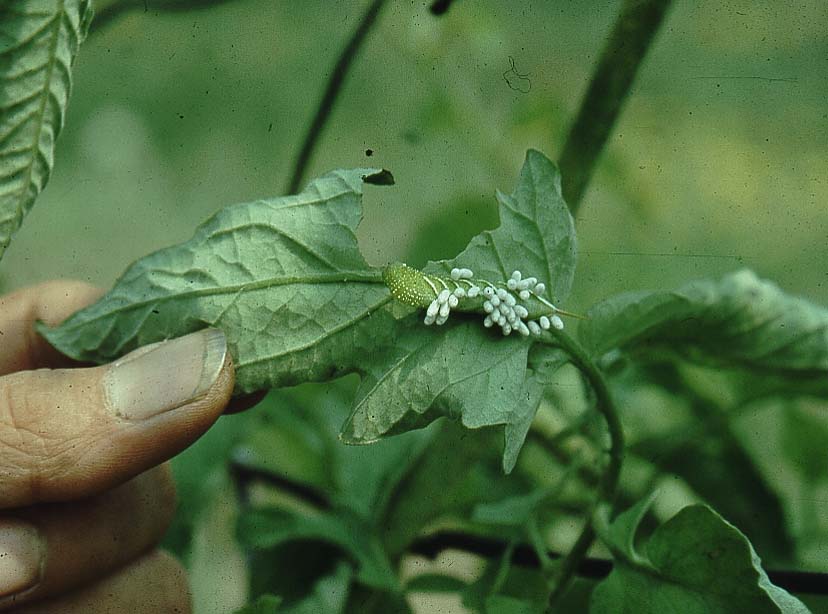
Pest: Hornworms (Manduca sexta, M. quinquemaculata)
Pest/disease identification and lifecycle, most common damage symptoms and crops affected:
Hornworms are probably the most destructive insect that attacks tomatoes. They are giant caterpillars that grow rapidly and can do a vast amount of eating in a very short amount of time. Sometimes it seems that healthy-looking tomato or pepper plants are stripped of their leaves overnight, leaving bare stems. The hornworms will also attack fruit, eating gouges out so large that they look more like bites of a furry animal pest than an insect.
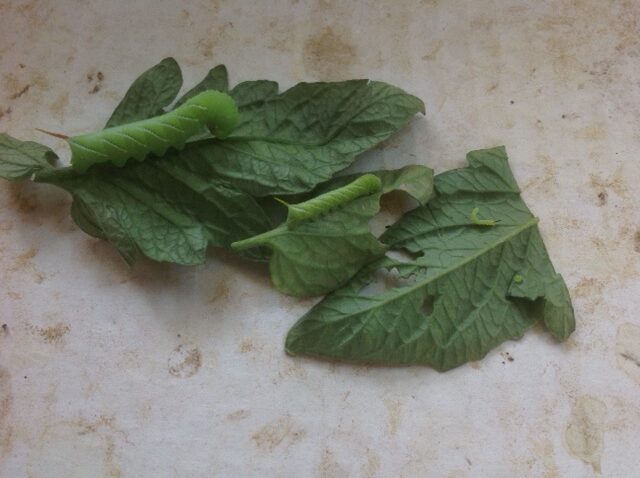
Look for feeding damage and frass (insect poop) around tomato and pepper plants. The frass is often the first noticeable sign of their presence. The frass of young hornworms is small, but the hornworms grow larger quickly and so does the frass. Many growers don’t bother looking for the caterpillars because they blend in so well, and instead just look for the frass.
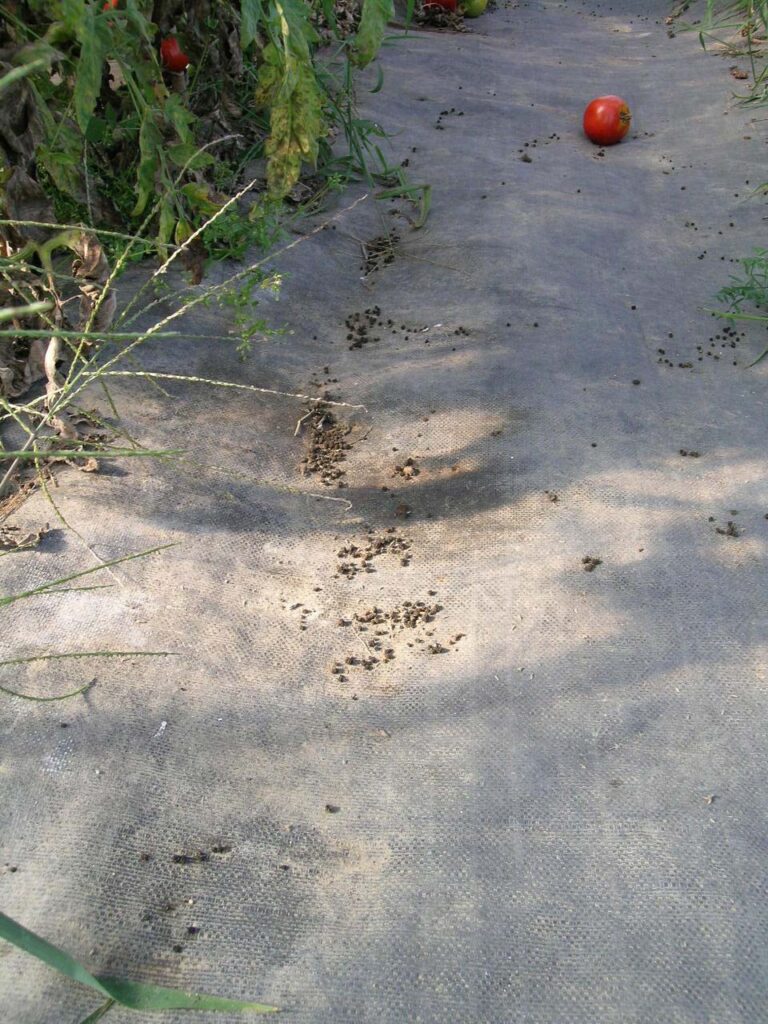
The adults are large, fast-flying hawk moths, which in flight may look like a hummingbird. At dusk they hover over flowers sucking nectar. Eggs are laid on tomato leaves and hatch in five days. Adults are most often found dead or dying among or nearby a tomato crop after having laid their eggs.
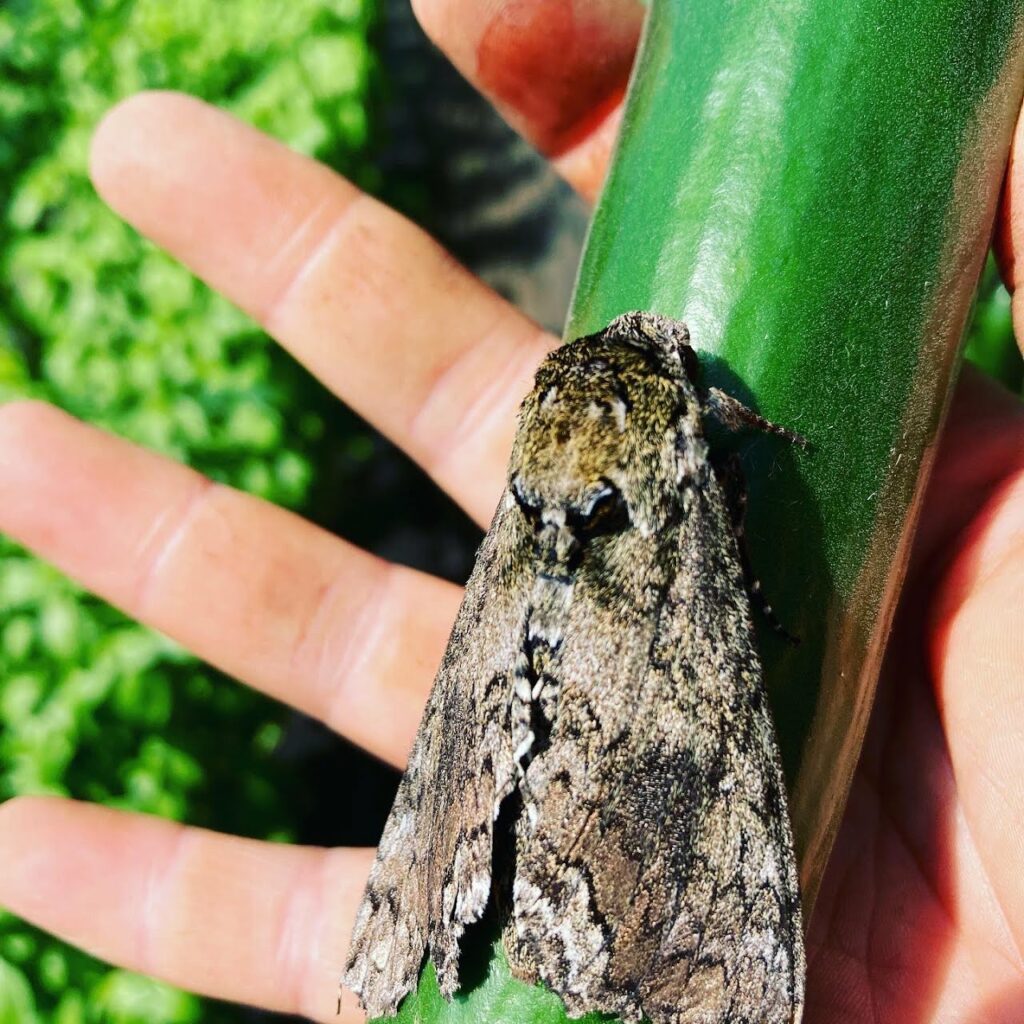
Management options:
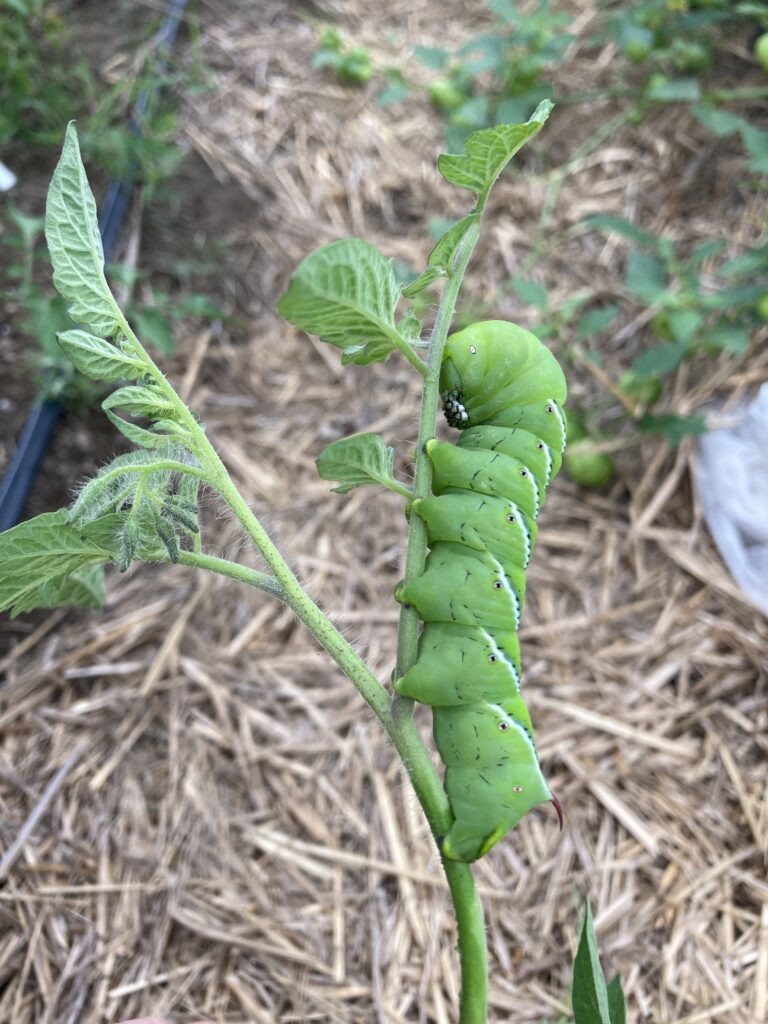
Cultural:
Hand picking hornworms is a bit frightening but does work and you can bring them to chickens who enjoy fighting with the challenging pest. The problem with hand picking is that hornworms blend in very well and it is easy to overlook one or two caterpillars, which can do significant damage in a day or two. Many growers report that using a black light at night helps to find them, as the caterpillars fluoresce brightly under ultraviolet light.
Pesticides approved for use in certified organic production (as a last resort):
Bt works very well on these caterpillars, as long as it is still feeding. Spinosad is also very effective against these caterpillars, but Bt is preferred as it has lower potential to negatively impact non-target species.
Please note: This information is for educational purposes. Any reference to commercial products, trade or brand names is for information only, and no endorsement or approval is intended. Pesticide registration status, approval for use in organic production and other aspects of labeling may change after the date of this writing. It is always best practice to check on a pesticide’s registration status with your state’s board of pesticide control, and for certified organic commercial producers to update their certification specialist if they are planning to use a material that is not already listed on their organic system plan. The use of any pesticide material, even those approved for use in organic production, carries risk — be sure to read and follow all label instructions. The label is the law. Pesticides labeled for home garden use are often not allowed for use in commercial production unless stated as such on the label.
